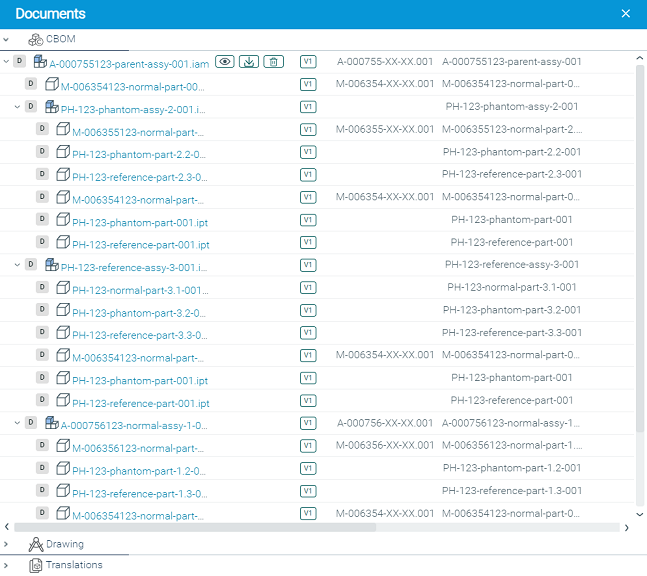Inventor: Map BOM table attributes to Upchain
In Inventor, you use the Bill of Materials (BOM) table to manage the bill of materials, setting the BOM structure types and quantities in the Model Data tab. This then drives the structure that appears in the Structured tab. Read more about Inventor’s Bill of Materials.
Upon registration into Upchain, the structure and quantities that appear in the Model Data tab drive the cBOM structure. The structure and quantities that appear in the Structured tab depend on the BOM Structure types chosen, and drives the eBOM structure.
Specific BOM Structure types set in Inventor's Bill of Materials table are converted into specific Upchain item types on registration into Upchain and displayed in the cBOM and eBOM views.
Once registered, every time you make a change to the BOM table in Inventor, whether it be the BOM Structure type or the quantity, the change is updated in Upchain whenever you save or check in the assembly.

BOM structure types
The following sections outline the Upchain item types that are created from the Inventor BOM Structure types and what is shown in the cBOM and eBOM views once registered.
Normal, inseparable
In Inventor, Normal is the default BOM Structure type for most components.
When registered into , a Normal component is registered to an item, as shown in the following table and appear in the cBOM and eBOM. When a parent assembly is Normal, its child items remain nested under it in the Structured BOM. Normal components are included in eBOM quantity calculations.
In Inventor, the Inseparable type is used to identify components that would be damaged if separated from other components or its parent assembly.
When registered into Upchain, an Inseparable component is registered to an item, as shown in the following table and appear in the cBOM and eBOM. When a parent assembly is Inseparable, its child items remain nested under it in the Structured BOM. Inseparable components are included in eBOM quantity calculations.
| Upchain plugin cBOM view representation | Upchain eBOM representation (web & plugin) |
|---|---|
Manufactured part ( for .ipt files) or assembly ( for .ipt files) or assembly ( for .iam files) item type, usual item representation for .iam files) item type, usual item representation |
Manufactured part ( for .ipt files) or assembly ( for .ipt files) or assembly ( for .iam files) item type, usual item representation for .iam files) item type, usual item representation |
Purchased
In Inventor, the Purchased type is used to represent off-the-shelf components.
When registered into Upchain, a Purchased component is registered to an item, as shown in the following table. When a parent assembly is Purchased, its child items remain nested under it in the Structured BOM. Purchased components are numbered and included in eBOM quantity calculations.
| Upchain plugin cBOM view representation | Upchain eBOM representation (web & plugin) |
|---|---|
Purchased mechanical part ( ), usual item representation ), usual item representation |
Purchased mechanical part ( ), usual item representation ), usual item representation |
Phantom
In Inventor, the Phantom type is used to simplify the design process. They exist in the design but are not included in the bill of materials.
When registered into , a Phantom component becomes a phantom file and exists only in the cBOM. That is, it is not registered to an item and therefore does not appear in the eBOM.
When a parent component is Phantom and has children that are Normal, Purchased, or Inseparable, then:
- Child items are promoted in the eBOM to a higher level than what the cBOM dictates.
- If multiple Phantom parent components exist above the child items, the child items are promoted until they reach a level where the parent is not Phantom.
- The quantity of a promoted child component is multiplied by the quantity of phantom parent component.
- When a child is promoted to a higher level, and if that level contains the same component, then the quantity of that component is the sum of the existing component’s quantity and the quantity of the component that was promoted.
During registration, the BOM Wizard does not show this item type on the cBOM or eBOM side. The structure matches that in the Structured tab of the BOM table in Inventor.
| Upchain plugin cBOM view representation | Upchain eBOM representation (web & plugin) |
|---|---|
Phantom icon ( ), usual item representation ), usual item representation |
No representation, file is phantom in Upchain |
Reference
In Inventor, the Reference type is used for construction geometry or to add context to a design.
When registered into , a Reference component becomes a phantom file and exists only in the cBOM. That is, it is not registered to an item and therefore does not appear in the eBOM.
When a parent component is Reference, then any children that may exist under it are registered as phantom (ie. not registered to items), regardless of their BOM Structure type.
During registration, the BOM Wizard does not show this item type on the cBOM or eBOM side. The structure matches that in the Structured tab of the BOM table in Inventor.
| Upchain plugin cBOM view representation | Upchain eBOM representation (web & plugin) |
|---|---|
Reference icon ( ), phantom file representation ), phantom file representation |
No representation, file is phantom in Upchain |
Upchain wider representation
Once registered into Upchain, the structure and quantities that appear in the Model Data tab drive the cBOM structure. The structure and quantities that appear in the Structured tab depend on the BOM Structure types chosen, and drives the eBOM structure. This is reflected in the cBOM and eBOM views.
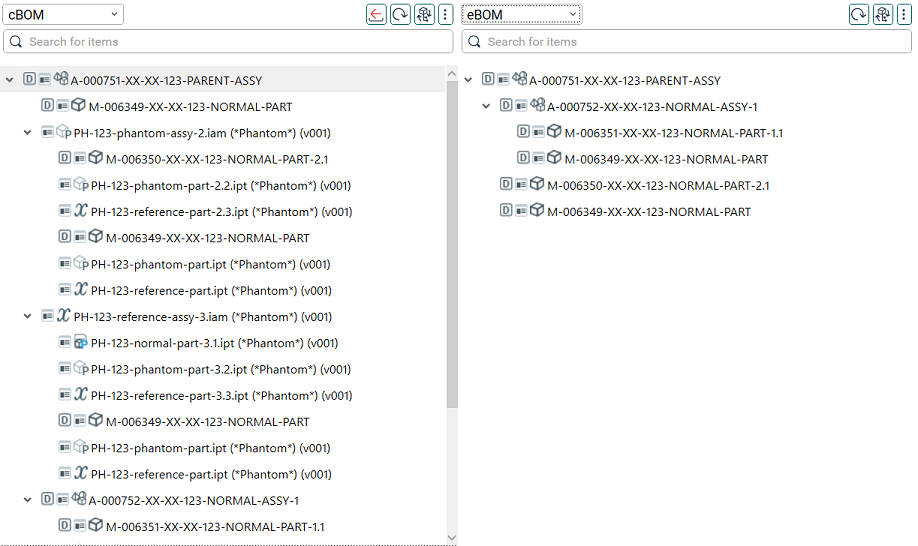
CAD plugin lower pane
In the CAD plugin lower pane, you can see the full cBOM in the Documents tab > cBOM. However, the icons do not match those described in the previous section.
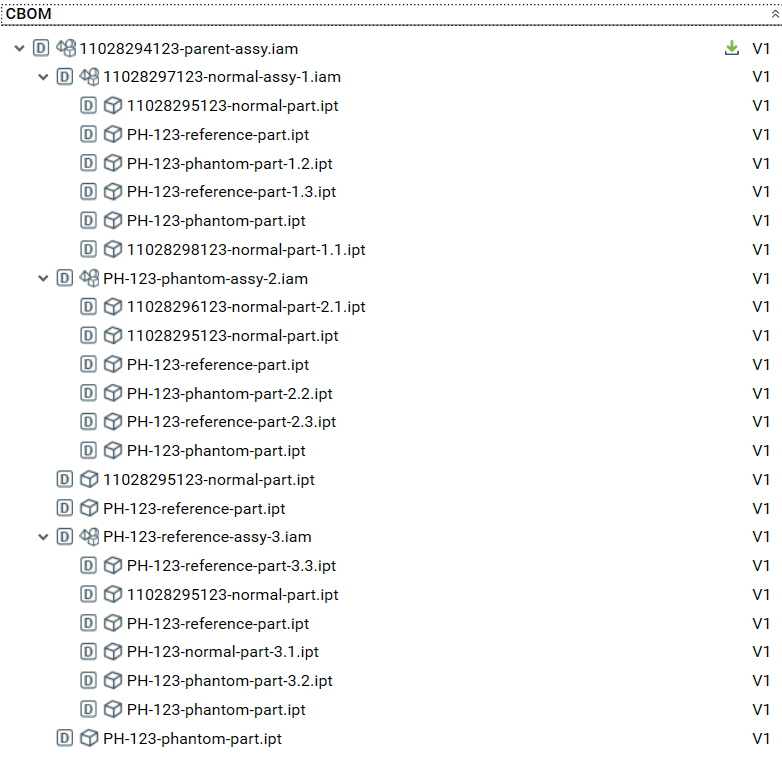
BOM wizard
During the intial registration and subsequent check ins, the BOM wizard shows only the CAD files that are registered to items on both the cBOM and eBOM sides of the window.
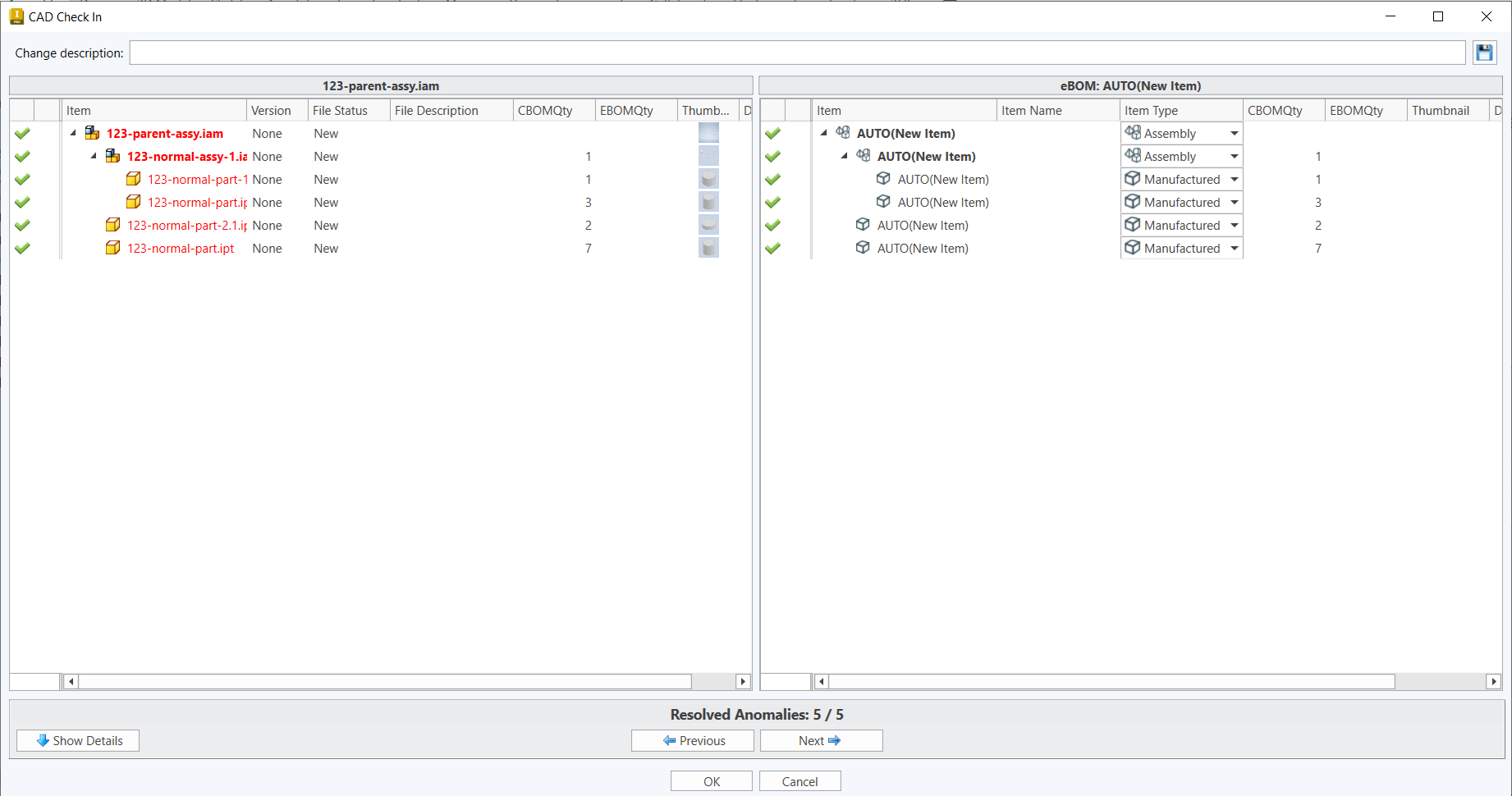
Download window
The download window shows the full cBOM structure as it was saved into Upchain. Note that files that are Reference in the Inventor BOM table only show as phantom in the download window.
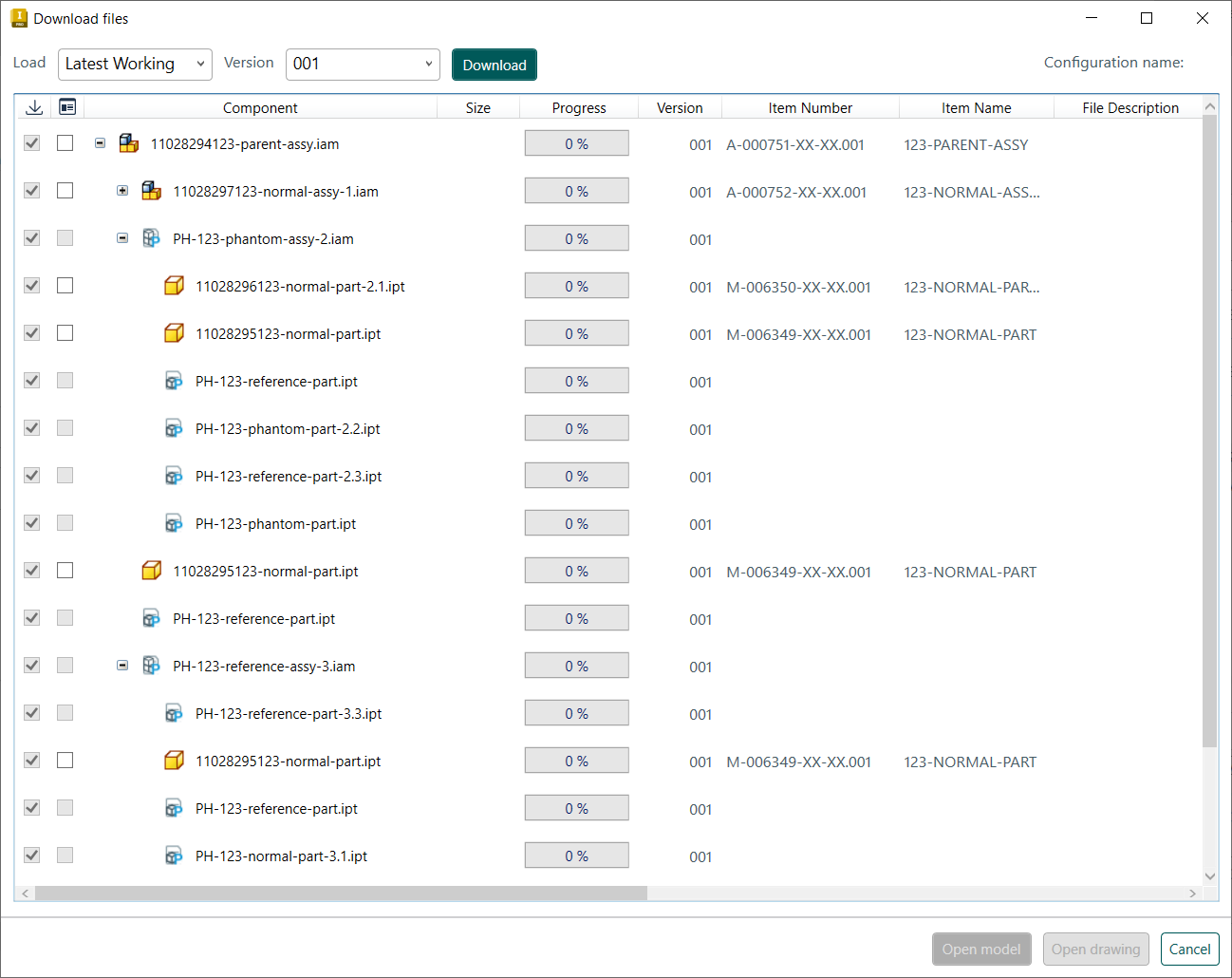
Web app
The web application displays the correct eBOM structure in all views. When viewing the cBOM structure in the Item Details Pane > Documents > cBOM section, the full cBOM structure as it was created in Inventor is shown.
